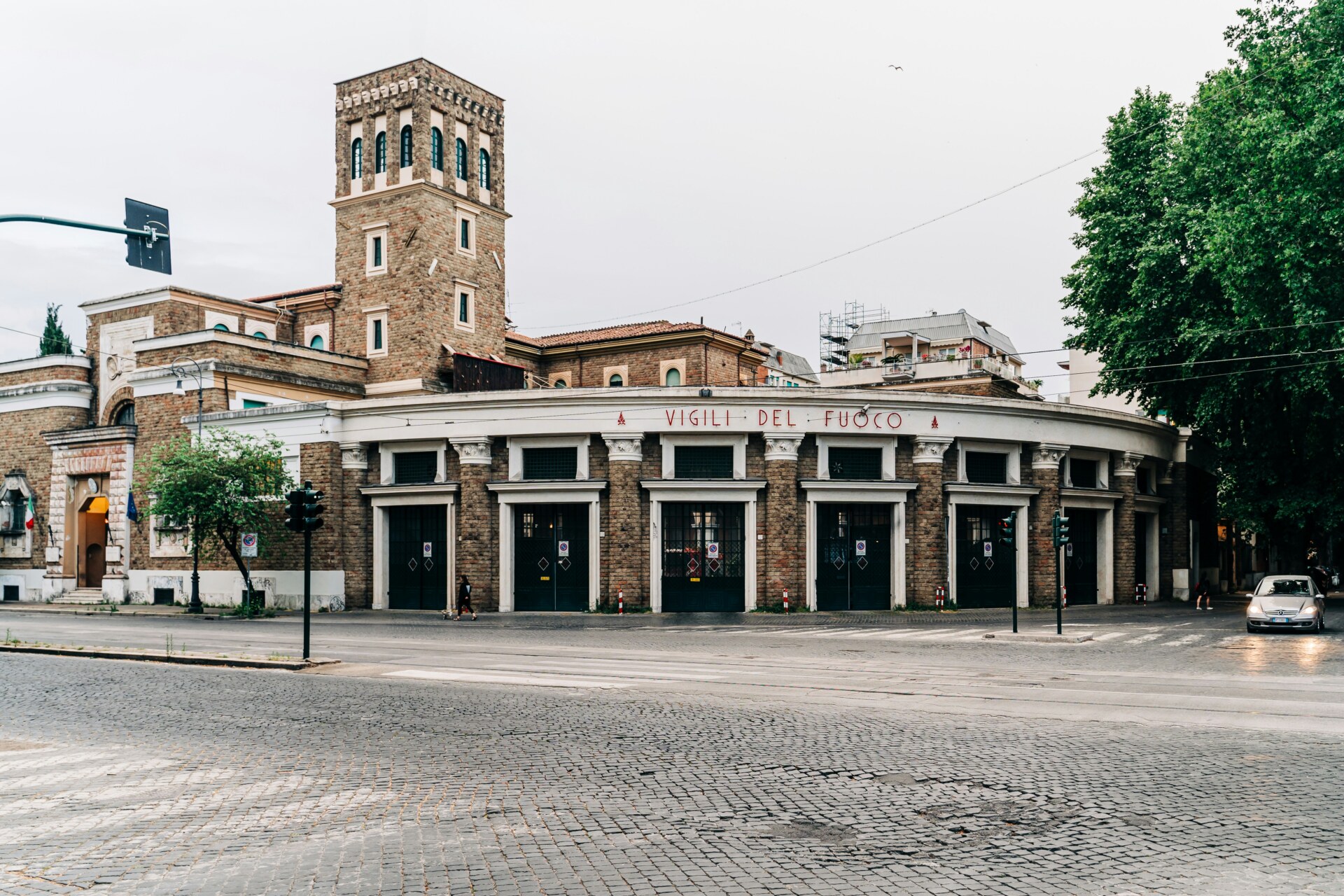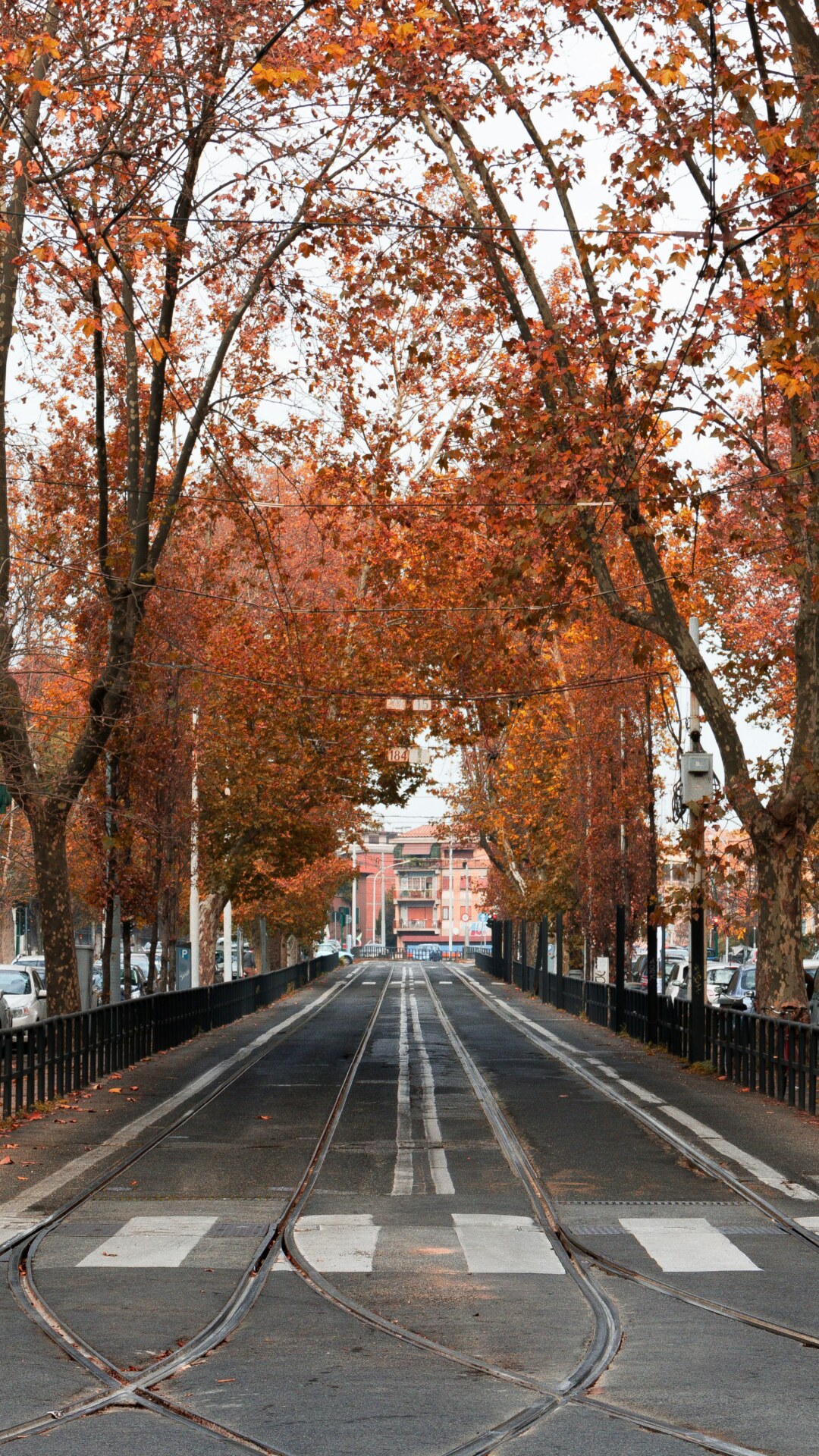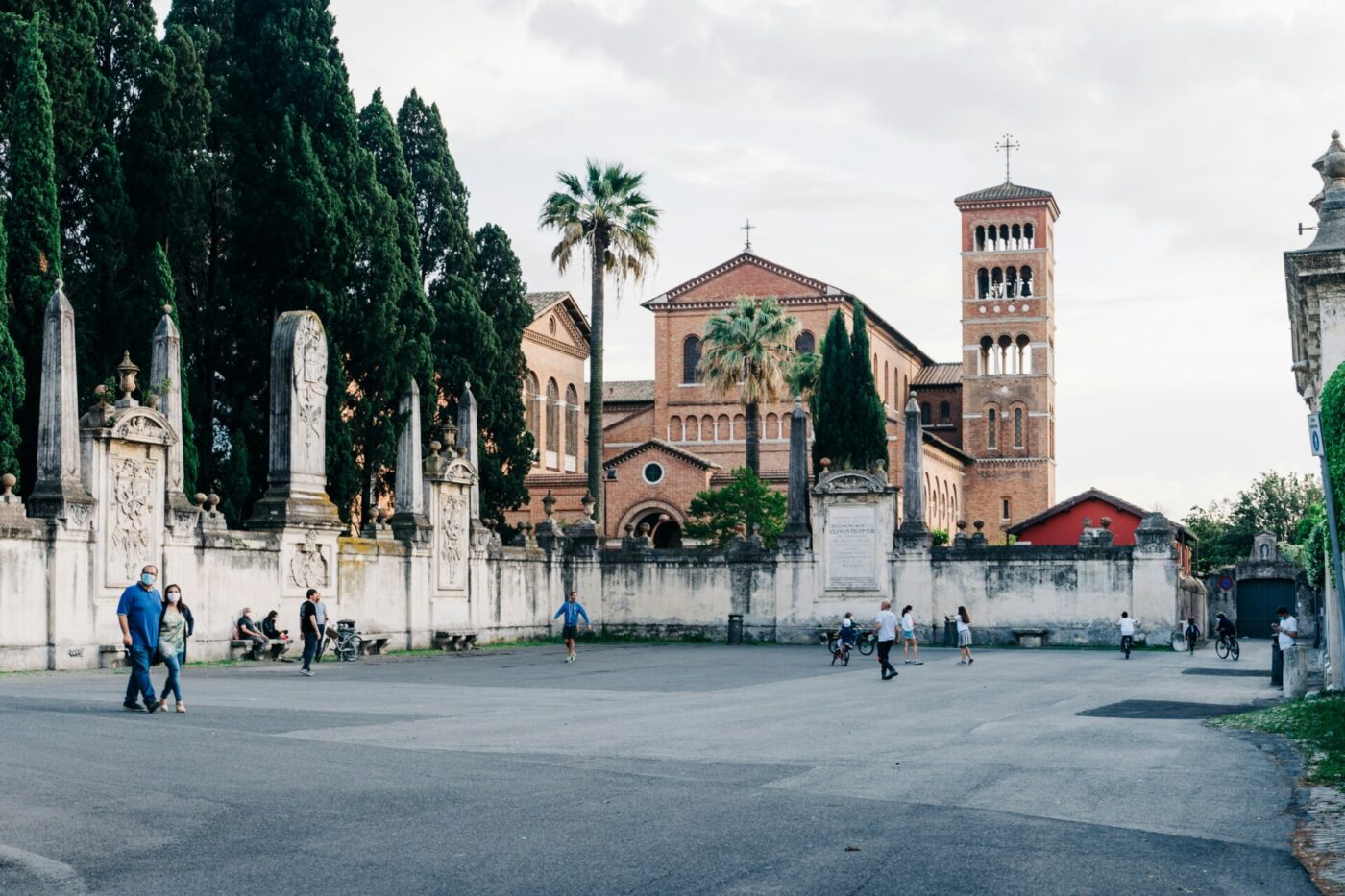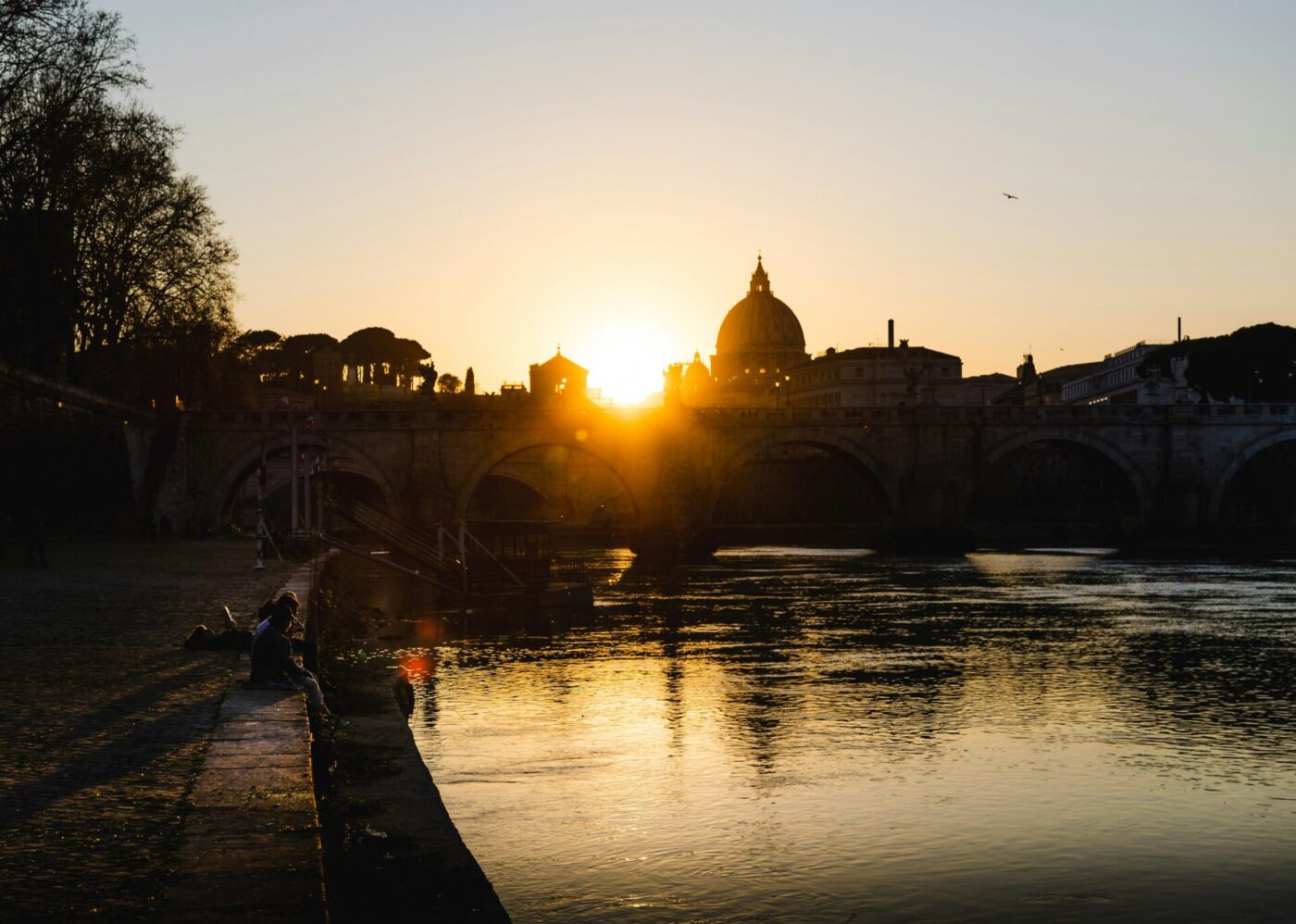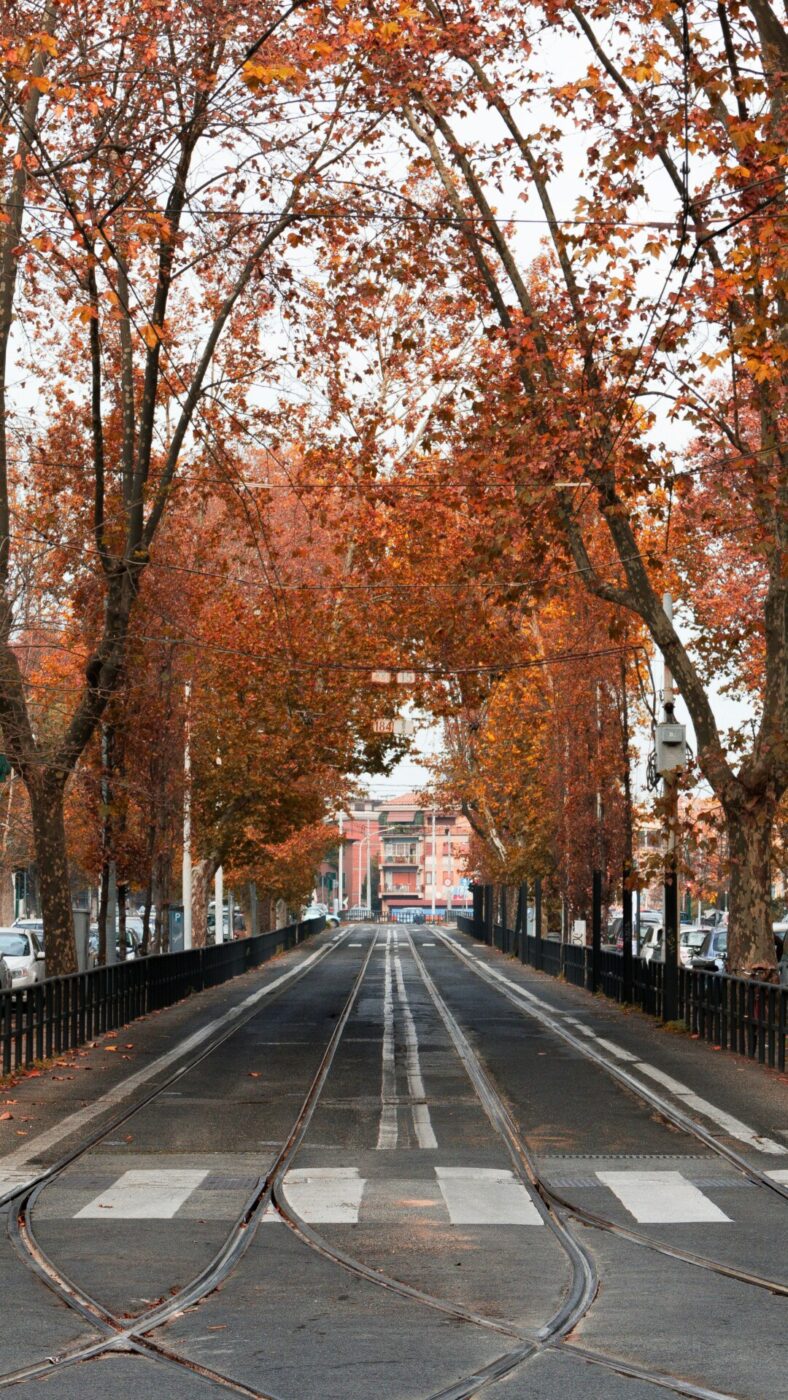A rotating door of tens of thousands of foreign diplomatic staff call Rome home. Italy’s capital city hosts several United Nations and intergovernmental organizations that attract international talent from all sectors, who converge in the Eternal City for a few weeks, months, years–upon arrival, it’s never clear how long you’ll stay.
I’m on my 5th diplomatic missione contract, a temporary contractor agreement lasting just a few months each. Over the last few years, I’ve worked under these freelance conditions in extraterritorial complexes across the city, contributing to different agencies’ mandates. Between Italy and home, I come and go as often as I swipe my keycard into these lofty buildings. I get funny looks from border control as they flip through all my visas. How many times have I assembled a modest life from corner stores’ wares and hand-me-downs? A yoga mat, plates, a fan–all daily necessities that are easily dispersed when I inevitably leave again.
I’m only one of many who never commit to a place that can’t commit to us either. Rome is known as an international hub for UN agencies’ headquarters, all of which rely on temporary roles to keep things going. The metropolis is home to the most prominent intergovernmental agencies dealing with food security and agriculture, in particular–the Nobel Prize-winning World Food Programme (WFP), the International Fund for Agricultural Development (IFAD), and, most widely familiar, the Food and Agriculture Organization of the United Nations (FAO). There’s a smattering of smaller organizations broaching topics as diverse as culture and art to development law. But most of the local UN scene–and even the city’s international community more generally–circles around the food organizations.
We’re lucky to have such opportunities, we tell ourselves. And it’s true–working for any of these institutions is prestigious. We try not to complain about the downsides because we know thousands are waiting eagerly to have this chance.
That’s particularly true for FAO, with its famed panoramic terrace offering the best view of the Circus Maximus. The oldest UN agency in Rome continues to be the most sought-after employer and the nucleus of UN life in Rome.
The expansive city-within-a-city FAO campus is on the picturesque stretch of umbrella-pine-lined Viale Aventino. This street threads through the city, connecting the Colosseum to the Pyramid of Cestius that marks entry into Rome’s southernmost neighborhoods.
When I worked at FAO, my world was contained within the confines of that block. It’s kind of like a Silicon Valley tech campus; before you even step out onto the street itself, the headquarters offers a bank, post office, medical clinic, restaurant, bookshops, coffee bars, and an expansive cafeteria. You can sign up for fitness classes, language courses, sports teams, and book clubs.
Anything else you need, you find on the viale. There’s little reason to stray far from the necessities and ease it offers: a metro stop, an English-speaking medical clinic and next-door farmacia that gives staff discounts, an affordable supermarket, and lackluster but convenient places for after-work aperitivi, such as Rosso and ViMi.
But it’s a shabbier hole-in-the-wall down the street that’s assured to always have at least a few UN staffers hanging around. Yellow Bar: an unassuming, barely lit nor furnished watering hole not to be confused with the even grungier Yellow Bar hostel club in Castro Pretorio. The Yellow Bar on Aventino is the great equalizer, where everyone from interns to high-level managers coalesces for a cold one after work, especially on Fridays.

Aventino neighborhood in Rome
During the day, hundreds of UN blue badge wearers exit the security turnstiles to have lunch at one of the many thriving restaurants on Aventino. The international community has given rise to a decent offering of eclectic food options–a rarity in Rome. You get into lunch routines with your colleagues and friends from other departments you otherwise wouldn’t bump into inside the massive headquarters complex.
Aventino might just be Rome’s most culinarily diverse street. If you’re among the first out for lunch, you can score a seat at everyone’s favorite coffee shop, Casa Manfredi. If it’s full, stop next door for a gyro at “the Greek place” (Elleniko) or head all the way to the end of the road for the hearty vegan buffet at 100% BIO. I had a friend I always met at “the French place”, a bistro called La Renardiere, for quiche lorraine. Employees and bosses gather for team-building lunches: hot pot offers at Malaysian Court Delicati Roma or sushi at Sushi e Noodles.
Later on in the evening, after those with families have headed home to tuck their children into bed, the younger crowd disperses. Couples and friends crowd the classy, modern pub tables at Testaccio’s Vinificio, soaking in the warm atmosphere, live DJ, and finger foods. Those looking for a break from beer and wine dip further south into the lively Ostiense neighborhood. Makai Surf & Tiki Bar’s tropical cocktails easily transport Rome-exasperated foreigners to a Hawaiian beach club.

Soho House Rome, Courtesy of Soho House
But the newest exclusive locale popular among Rome’s UN and broader expat community is the Rome branch of London-based Soho House. Putting down roots in the San Lorenzo neighborhood in late 2021, the artsy hotel-cum-members’ club feels like an architectural embodiment of living in Rome as a UN worker in that it evokes a feeling of being neither here nor there.
It goes without saying that the opportunity to work in the United Nations system is an immense privilege. This is deeply felt even in Rome, where income disparities are stark. These differences aren’t as acutely felt between locals and the lower-level consultants like myself, but it’s a general sentiment that rings true for the higher ups.
Despite the many privileges it can bring, life here as a UN staffer can be isolating. It’s rare to be able to integrate into the local community, and your ephemeral circle of colleagues constantly evolves as people change assignments, change countries, change lives.
Even those who stay long-term–despite most “permanent” staff positions offering only two years of job security–don’t usually assimilate unless their partner is Italian. Rarely do foreigners get a complete handle on their Italian language skills, much less the Roman dialect, which is one of the most essential parts of being accepted here.
People often say that expats have to choose whether they want a local Italian community or a community of foreigners. While not impossible, it’s difficult to keep one foot in each world, because each world is so far apart. Most foreigners remain in a suspended strata of the population: within and without. We’re physically here, but we don’t have deep relational or cultural roots to ground us.
As a consequence of flitting back and forth between Italy and the US–plus, I can admit, my stubbornness to Roman idiosyncrasies–I’m far from being a local. I’ve spent most of my adult life here, and I know the city almost as well as I know my hometown. But knowing a place is much different than being part of it. Rome is my second home, but my relationship with the city is complicated; it’s like the cousin you have fun with but are also glad to only see once a year. Daily life here challenges me no matter how many years pass, but I can’t imagine life without at least some Rome in it.
At the end of the night, when the wine bars pull down their shutters and the pizza al taglio is sold out, the UN staffers return to their rented rooms or apartments nearby–in San Giovanni, San Saba, San Paolo. In the morning, the day begins again with a caffè on Viale Aventino.

